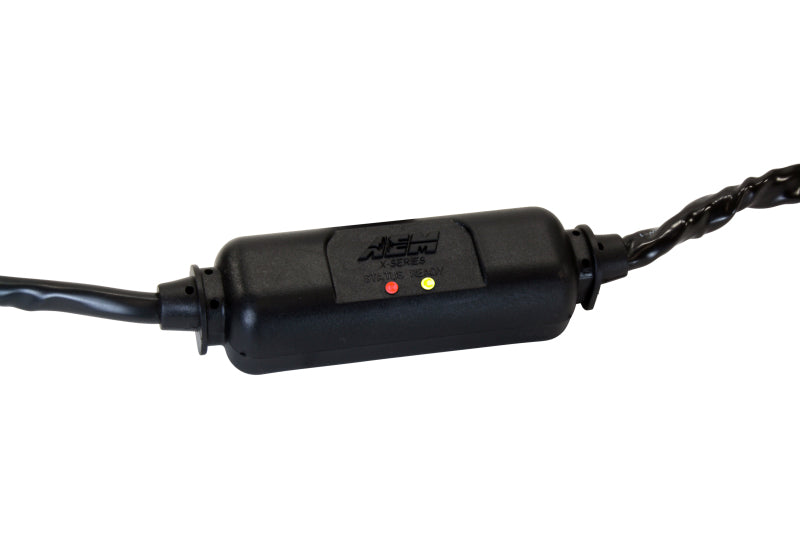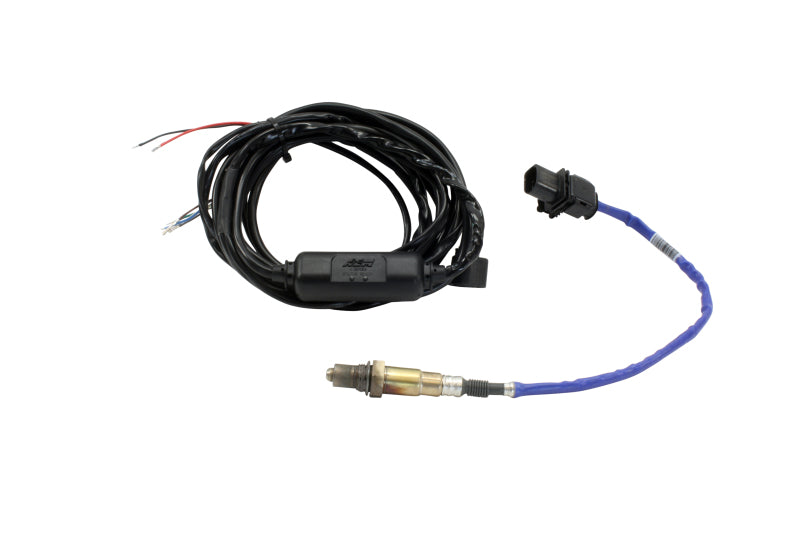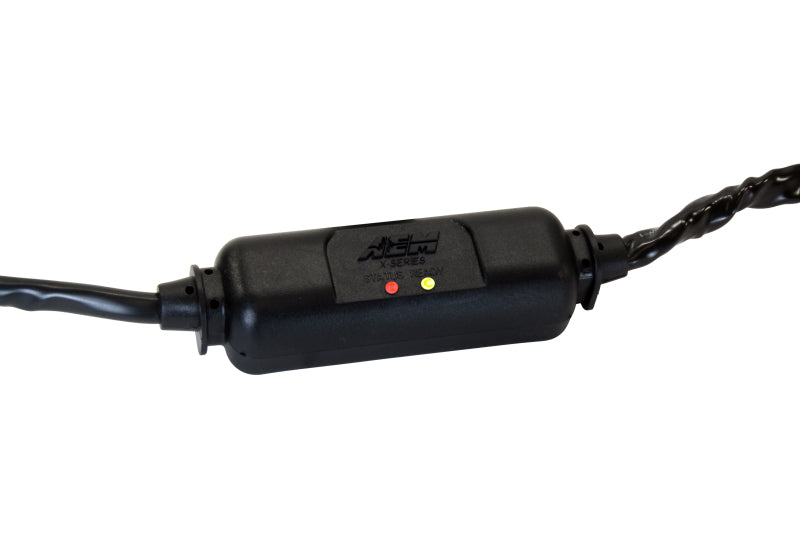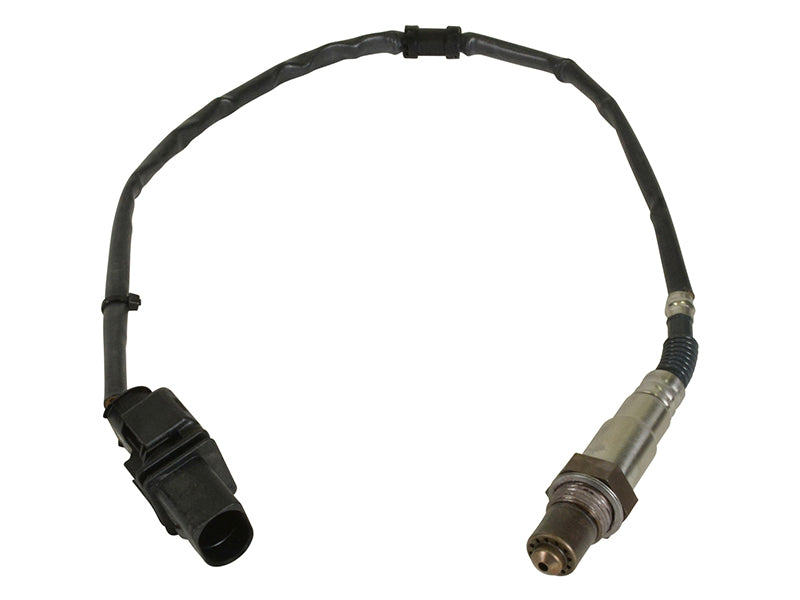AEM X-Series Inline Wideband UEGO Controller
AEM X-Series Inline Wideband UEGO Controller
Couldn't load pickup availability
AEM X-Series Inline Wideband UEGO Controller
PN: 30-0310 (Instructions)
AEM’s X-Series Inline Wideband UEGO Air/Fuel Ratio Controllers are built upon unique, patented, 100% digital technology that makes them the fastest responding wideband air/fuel ratio controllers in independent testing*. The X-Series Wideband UEGO Air/Fuel Ratio Controller replaces the popular 30-2310 Inline Controller.
X-Series Inline Wideband UEGO Controller features a weather-resistant, low-profile enclosure with status LEDs. It is ideal for users who do not need a gauge display and want the fastest response time when data logging or for feedback control when tuning with an engine management system.
The X-Series Inline Controller includes a 0-5v and RS232 Serial Port output for feedback control and data logging, and an AEMnet (CANbus) output for data logging and daisy chaining multiple X-Series Controllers together (up to 16 cylinders) for recording AFR in multiple cylinders. It supports vehicle/system voltages up to 16V, and can be used on EFI or carbureted applications, and dynamometers in applications using gasoline, methanol, ethanol, Diesel, propane and CNG.
PATENTED X-DIGITAL TECHNOLOGY
Patented X-Digital wideband technology (Patent 9,575,030) gives these controllers the ability to read and report values that other controllers do not, which can deliver more optimized engine tuning and a safer overall operating condition. The controller’s high speed digital implementation ensures no loss of signal fidelity and full transient response, making it able to identify the slightest fluctuations in AFR and output them in full value.
WHY RESPONSE TIME MATTERS
Faster response time improves wideband feedback control, and can provide a safer, more powerful and accurate tune. AEM’s Wideband Controllers with X-Series digital technology can reduce deadtime and improve the performance of your vehicle through more accurate AFR tuning. Deadtime is the delay between when exhaust gas composition changes and when that change is reported by the O2 sensor. While flow of exhaust gases (transport delay) can affect deadtime, it is not the only source. Often, the sensing elements response to the gas is the largest contributor to deadtime when an engine is in high RPM under load.
When tuning an engine using wideband AFR feedback control on an inertia dyno, deadtime affects the data you are looking at because it is reported in a different operating location than when it actually occurred. This means with long deadtimes, whatever changes you make to the base fueling will likely be in the wrong location. This can be particularly dangerous to high compression and high-boost forced induction vehicles, and EFI systems that use feedback control to auto tune.
Reducing deadtime improves wideband feedback control, and can provide a safer, more powerful and accurate tune. AEM’s Wideband Controllers with X-Series digital technology can reduce deadtime and improve the performance of your vehicle through more accurate AFR tuning.
FACTORY CALIBRATION RESISTOR OR FREE-AIR CAL, IT’S YOUR CHOICE!
The X-Series Wideband Gauge and X-Series Inline Controller support the popular Bosch 4.9LSU sensor and can utilize both the factory calibration resistor and free-air calibration methods**. This allows users to take advantage of the precise factory resistor calibration when a sensor is new but then allows for free-air calibrations if the user desires when the sensor ages. It’s the perfect marriage of simplicity and accuracy!
Features
- X-Series Inline Wideband UEGO AFR Controller were fastest responding wideband air/fuel ratio controllers in an independent test vs. 17 competitors wideband AFR controllers
- Patented X-Digital technology (Patent 9,575,030)
- Includes Bosch 4.9LSU wideband UEGO sensor
- Factory calibrated resistor does not require free-air calibration, but technology allows for free-air calibration as sensor ages if user desires
- Compatible with vehicle/system voltages up to 16V
- 0-5V & RS232 output for data logging and feedback control, AEMnet (CANbus) for data logging and daisy-chaining multiple controllers up to 16 cylinders
- Weather-resistant, low profile design
Specs
- 0-5V Output Gasoline values from 8.5:1 to 18.0:1 AFR
- CANbus Output Gasoline values from 8.0:1 to 20.0:1 AFR
- CANbus Output Lambda values from .55 to 2.00
- 0-5V Output Lambda values from .58 to 1.23
- 0-5V Output E85 values from 5.7:1 to 12.0:1 AFR
- 0-5V Output Ethanol values from 5.2:1 to 11.0:1 AFR
- 0-5V Output Methanol values from 3.75:1 to 8.0:1 AFR
FAQ
WHAT IS A WIDEBAND UEGO AIR/FUEL CONTROLLER?
AEM's Wideband UEGO (Universal Exhaust Gas Oxygen, pronounced “You-Way-Go”) Controllers are powerful, cost effective tuning tools that allow users to accurately monitor the Air/Fuel Ratio (AFR) of their engine.
WHY USE A WIDEBAND AIR/FUEL CONTROLLER?
Accurate AFR data is critical when tuning an engine. Running rich (very low air/fuel ratio, excessive fuel) can cause a loss in power, while running too lean (very high air/fuel ratio, not enough fuel) may result in serious engine damage. Using a wideband air/fuel controller during the tuning process allows you to monitor AFR and adjust tuning parameters to optimize them for maximum power and efficiency. AEM has a comprehensive line of highly accurate, reliable wideband air/fuel controllers that can help ensure your vehicle is optimally tuned.
CAN I CHANGE THE AEM UEGO SENSOR’S CONNECTOR?
No. There is a laser-etched, calibrated resistor in the sensor’s connector body. This resistor is specifically created for the exact sensor that it is attached to. Modifying this will invalidate the sensor’s output.
* Independently tested at 360° Product Testing (results reported on August 31st, 2015) against 17 competitor wideband UEGO Air/Fuel Controllers. AEM X-Series Inline with Bosch 4.9LSU wideband sensor and AEM X-Series Wideband UEGO AFR Gauge with Bosch 4.9LSU sensor recorded the fastest response times.
** Wideband UEGO sensors are wear items and their lifespan is determined by many factors including contamination from leaded fuels, automotive fluids, particulates, mechanical or thermal shock and from being unheated and exposed to the exhaust stream. Free-air calibration may correct drift as a sensor ages, but it is recommended that they are replaced as part of your vehicle’s maintenance program. When performing free-air calibration, please follow the procedure outlined in the instruction manual.








